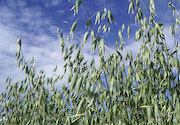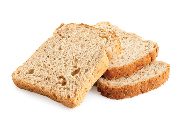| |
| |
 |
 |
| |
 |
|
@{mv_date_MMM d, yyyy}@ |
|
| |
 The 10 partner co-operatives and Sollio Agriculture aim to offer better marketing conditions to Quebec grain producers, find outlets for their harvests and meet the needs of processing customers.
» Read more...
The 10 partner co-operatives and Sollio Agriculture aim to offer better marketing conditions to Quebec grain producers, find outlets for their harvests and meet the needs of processing customers.
» Read more...
Last week, the federal government announced a major infrastructure investment, including $2 billion to expand high-speed broadband, and $1.5 billion to irrigate an additional 700,000 acres across Canada.
» Read more...
The fund supports retail and industry projects that develop novel, value-added uses or promote new markets for Ontario grains. Organizations with innovative projects can receive up to 60 per cent of the project’s cost.
» Read more...
|
| |
|
| |

Waterhemp has become a common and unwelcome find in farmers’ fields in Ontario. First discovered in 2002 it has now managed to spread across the province and into Quebec and as it has spread, it has become increasingly resistant. So how best to deal with waterhemp? The answer comes down to diversity, be it in additional herbicide modes of action, crop rotations, the use of cover crops — even diversity in tillage practices. Different modes of action can be applied at different time periods during the corn or soybean growing cycle in conjunction with these other tactics to really get on top of the problem on your farm. Visit Mixitup.ca and start developing your waterhemp control strategy today.
|
| |
|
| |
 As demand for quality milling oats continues to grow, oat growers are looking to increase yields and maintain better quality oat production. Bill May, crop management agronomist with AAFC in Indian Head, Sask., led a two-year study looking at the effect of fungicide application and nitrogen rate on oat yield and quality. Findings include high N rates can lower oat test weight and increase lodging risk.
» Learn more
As demand for quality milling oats continues to grow, oat growers are looking to increase yields and maintain better quality oat production. Bill May, crop management agronomist with AAFC in Indian Head, Sask., led a two-year study looking at the effect of fungicide application and nitrogen rate on oat yield and quality. Findings include high N rates can lower oat test weight and increase lodging risk.
» Learn more |
| |
 The 2019 harvest was one to forget for many farmers. In addition to frost, mildew and Fusarium damage, a quality factor unfamiliar to many resulted in downgrading of durum and spring wheat. Falling number (FN) provides an indication of the level of sprout damage in wheat, which isn’t always visible on the kernel. Wheat with a low FN is graded lower and makes poor quality bread, limiting end uses.
» Learn more
The 2019 harvest was one to forget for many farmers. In addition to frost, mildew and Fusarium damage, a quality factor unfamiliar to many resulted in downgrading of durum and spring wheat. Falling number (FN) provides an indication of the level of sprout damage in wheat, which isn’t always visible on the kernel. Wheat with a low FN is graded lower and makes poor quality bread, limiting end uses.
» Learn more |
| |
|
| |
|
|
| |
| |






